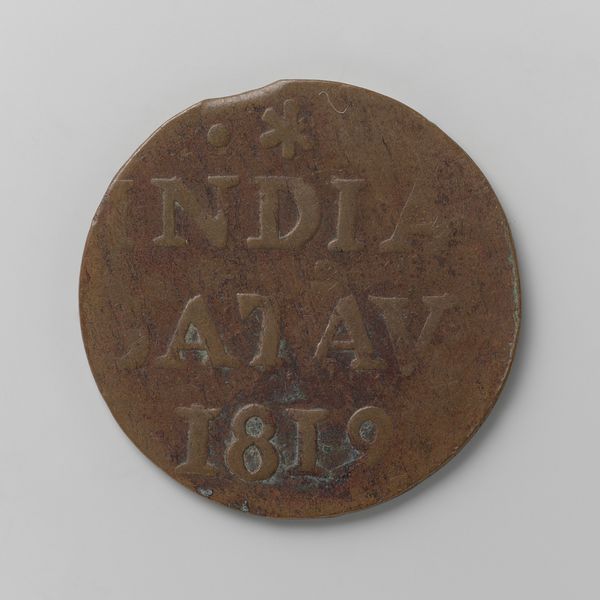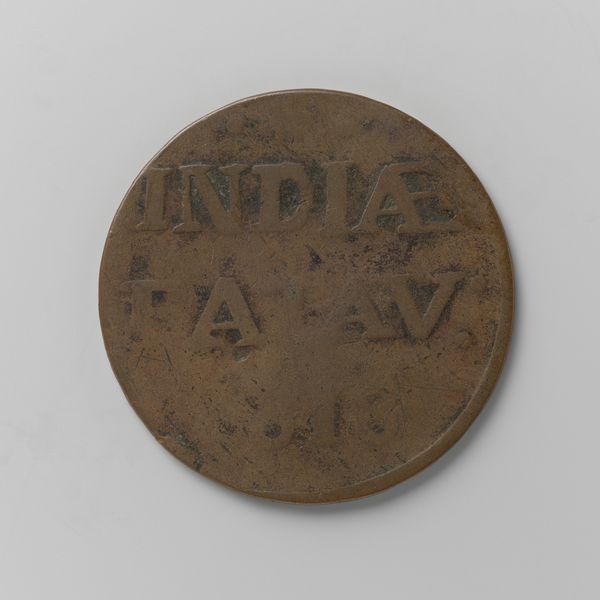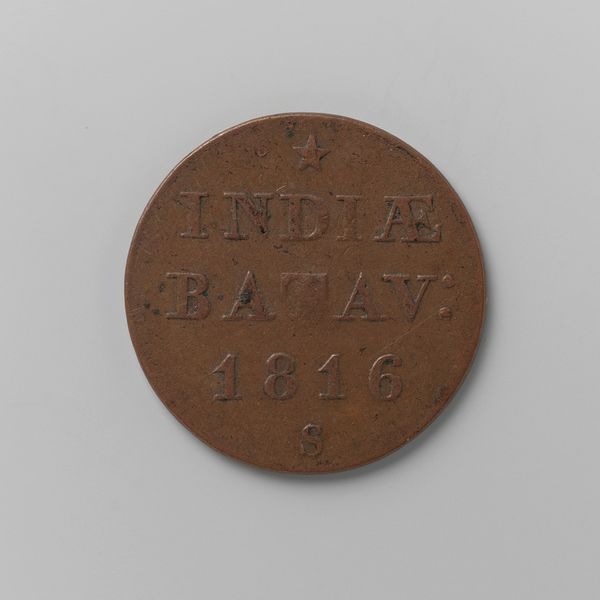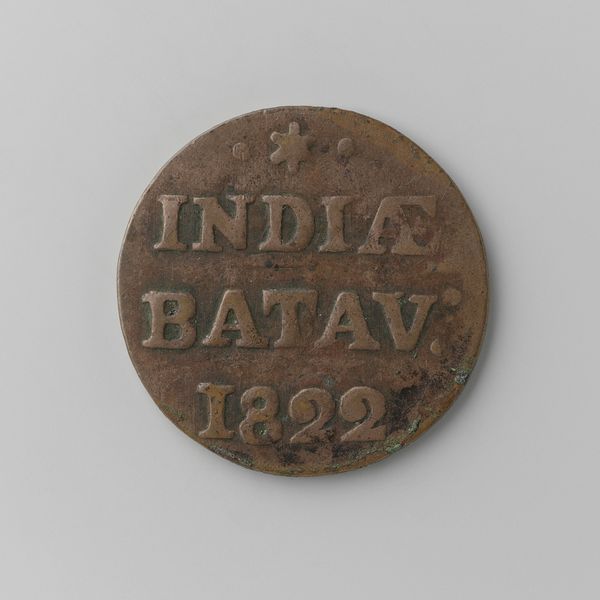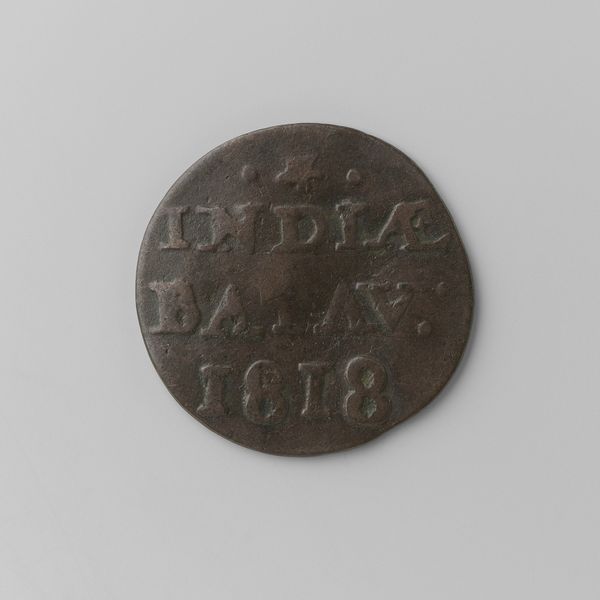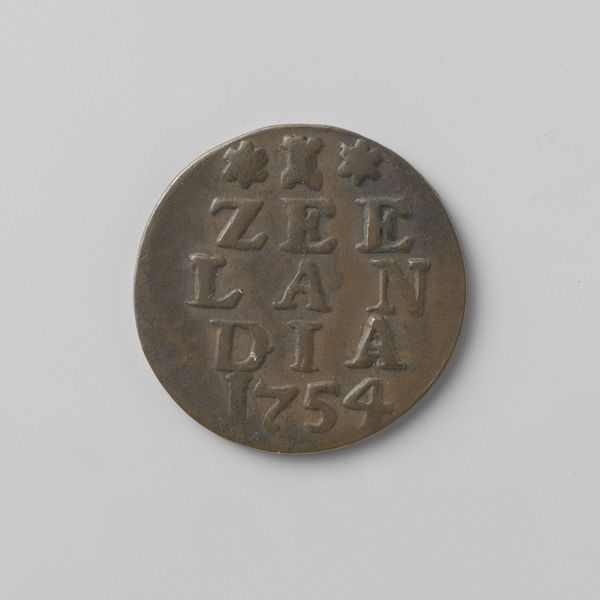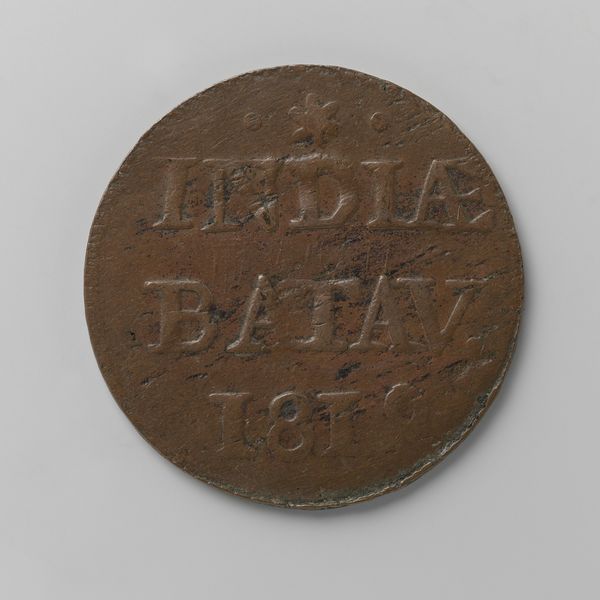
print, metal, photography, engraving
#
dutch-golden-age
# print
#
metal
#
photography
#
coin
#
engraving
Dimensions: diameter 1.8 cm, weight 1.14 gr
Copyright: Rijks Museum: Open Domain
Editor: Here we have a copper half-duit coin from 1802, minted in Holland for use in the Dutch East Indies. The worn texture and simple inscription give it such a stark feel. What story do you see in this small object? Curator: The coin speaks volumes about cultural reach. The star, positioned above “India Batav,” signals not celestial navigation but mercantile aspiration. Its symbolism taps into a long tradition of using stars to signify empires. Editor: So the star isn’t necessarily religious, but rather an emblem of power and control? Curator: Precisely. Consider its size—insignificant on its own—but multiplied by countless transactions, its cumulative impact on colonial power is undeniable. How might this humble coin carry weight, influencing the psyche of both colonizer and colonized? Editor: That’s fascinating. I hadn’t thought of how an everyday object can act as a constant, almost subliminal reminder of authority. It’s more than just money, it's a tiny piece of propaganda, right? Curator: Indeed. Its visual rhetoric works subtly. Currency embeds ideologies deeply, crafting cultural memory itself. Does seeing this change how you think of other coins or symbols? Editor: Absolutely. I'll never look at a coin the same way again! The symbols we take for granted carry immense historical significance and project ideas that shape us.
Comments
No comments
Be the first to comment and join the conversation on the ultimate creative platform.

